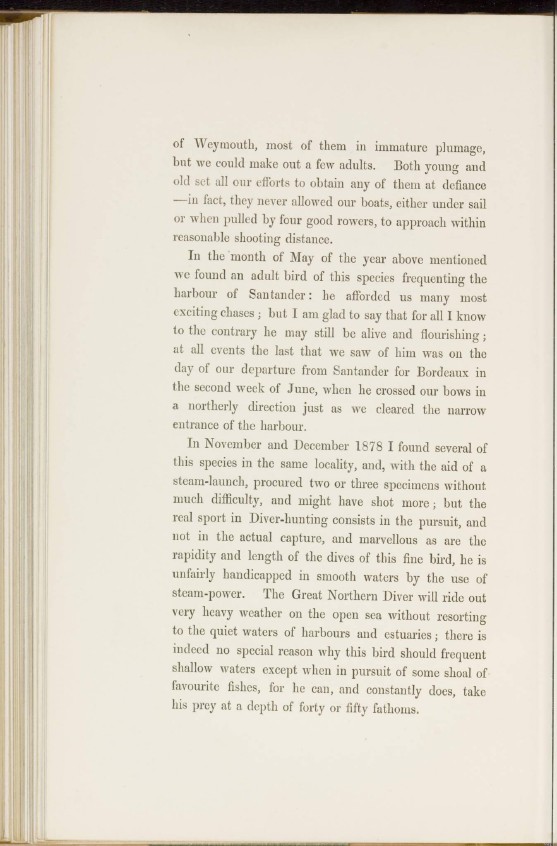
of Weymouth, most of them in immature plumage,
but we could make out a few adults. Both young and
old set all our efforts to obtain any of them at defiance
—in fact, they never allowed our boats, either under sail
or when pulled by four good rowers, to approach within
reasonable shooting distance.
In the month of May of the year above mentioned
we found an adult bird of this species frequenting the
harbour of Santander: he afforded us many most
exciting chases ; but I am glad to say that for all I know
to the contrary he may still be alive and flourishing;
at all events the last that we saw of him was on the
day of our departure from Santander for Bordeaux in
the second week of June, when he crossed our bows in
a northerly direction just as we cleared the narrow
entrance of the harbour.
In November and December 1878 I found several of
this species in the same locality, and, with the aid of a
steam-launch, procured two or three specimens without
much difficulty, and might have shot more; but the
real sport in Diver-hunting consists in the pursuit, and
not in the actual capture, and marvellous as are the
rapidity and length of the dives of this fine bird, he is
unfairly handicapped in smooth waters by the use of
steam-power. The Great Northern Diver will ride out
very heavy weather on the open sea without resorting
to the quiet waters of harbours and estuaries; there is
indeed no special reason why this bird should frequent
shallow waters except when in pursuit of some shoal of
favourite fishes, for he can, and constantly does, take
his prey at a depth of forty or fifty fathoms.